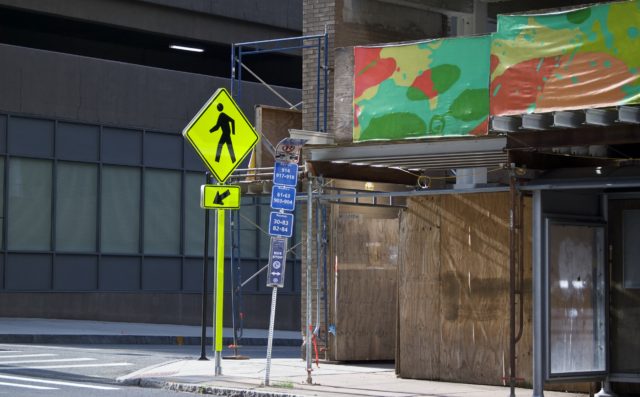
This summer marks my two year anniversary of being car-free.
I have heard people say that a car is needed in Connecticut, but I knew from seeing friends and neighbors do this that the popular belief was not an accurate one.
Before anyone gets the wrong idea, I will say that this decision was made primarily for financial reasons, but the environmental part of it is a nice side effect. We seem to love to divide people, like bus riders, for example, into these categories of “choice” or “no choice,” and I am here to say that this is a false dichotomy. People are complex and can have many reasons for why they do what they do.
Or in this case, don’t do.
I started down this path more than a decade ago. I had been living in Hartford awhile and was walking or biking to places when I felt up to it or when parallel parking seemed like it might be required. It’s not a huge city, and it’s not too hilly. And for perspective, I grew up in a place where the nearest attraction was a full mile away, no sidewalks. . . and that “attraction” was a gas station that happened to sell soft serve ice cream. Oh, and there was a car wash across the street from that.
As you can tell from that, I was raised in a culture where the car was the default. You didn’t think about it. You just assumed this was how it had to be. Thankfully, it’s possible to evolve.
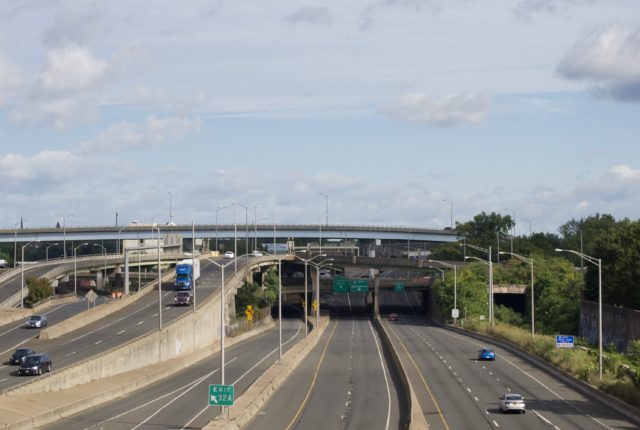
I had long been aware of the damage I was doing to the environment and I felt guilty about it, but a hybrid or EV was above my income bracket, so I chose to drive what I had until it could not be driven anymore. Around ten years ago, I got myself (what to me is) a nice bicycle that I would want to ride around when the car was done. Occasionally the car would go to the shop for a few days or weeks, and I’d get around on foot or by bike in the meantime. During one of these times, I was hosting a radio show in the middle of the night. So, I got on that bicycle at 2 AM. Surprisingly, riding in the middle of the night was far more relaxing and enjoyable to me than at any other time of the day. Few people were on the road. Maybe they were all impaired, but how much worse is that than those distracted by their phones during rush hour?
In my car’s final year, I could tell it was about time. I was never stranded in the middle of nowhere. My car was very considerate to do its breaking down always when it was parked at my house. Eventually, it stopped.
In retrospect, I could’ve made the transition smoother by doing a major bulky goods run — cat litter, cat food, and all the other heavy things. This would have let me better ease into the car-free life.
Being car-free is oft-viewed as a kind of deviance. The car is culturally the default, in certain circles, even in mid-sized cities. Most attractions only provide directions for those arriving by car. Many jobs require you to have a license and a car, even though the job itself in no way involves driving — the hiring people simply do not understand the many varied ways people can get from A to B. After being asked about the weather, you are asked where you parked or if you hit any traffic. If you answer with “I walked,” sometimes the follow up question will be “from which parking lot?”. Yikes.
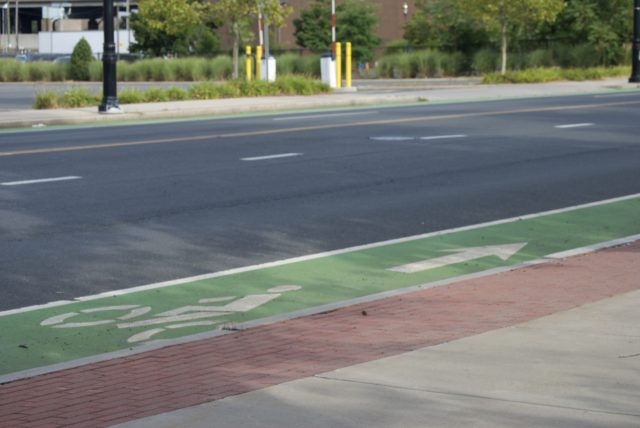
I’ve gotten asked a few questions about my not-so-radical mode of transportation, and I don’t know which ones were motivated by genuine curiosity. Anyway, I’ll answer them here in case anyone is toying with this idea. . . and please, if you’re here to just troll the comments and tell me why this won’t work for you, don’t bother. You are not who this is for.
How do you get to work? I work at a few different places, so first I will say it depends on where I am going. Regardless, they are all in Hartford, which is also where I live. Walking is my mode of choice when it makes the most sense. If I can do the trip in an hour or less and I do not have to cross Albany Avenue where it becomes a speedway, then I walk. Occasionally I ride my bike, but that tends to be on the weekend or when weather dictates. For longer trips, I take the bus. To date, I have not done a taxi or hipster cab (“car sharing”) for commuting because I’m cheap and why would I hire someone who is not going to be as safe of a driver as I am? So far, pretty simple.
How do you get home at night? I am proud of the fact that I have always been able to find my way home, and without leaving a trail of breadcrumbs. If someone is persistent about giving me a ride, sometimes I’ll acquiesce, but honestly, I don’t like it when folks are pushy like that. An offer is nice, but once declined, let it go pleaseandthankyou. I’m a grown ass woman — don’t patronize me.
The answer to this is not unlike the one about how I get to work. It depends on how far something is. If I took a bus to New Britain, I’m probably taking the bus back. If I walked to the grinder place on Capitol Avenue, I’m walking home. There are streetlights. One time in Frog Hollow, where I live, a skunk waddled out onto the sidewalk in front of me. This is how I learned that I can sprint.
I know that when this question is asked, what I’m really being asked is why I’m not terrified all the time as a woman. Sorry, I’m not buying propaganda used to keep women indoors and isolated unless we have a chaperone. Bump that. I’ve had various unpleasant experiences with men, but they have all been with men who I knew. I know I’m not invincible, but I long ago gave myself permission to fully defend myself against anyone trying to do harm. So, there’s that.
Besides the facts about who is most vulnerable, I have my fair share of anecdotes. Of the people I know who have been physically assaulted by strangers on the street, all have been men, and thankfully, all their injuries were minor and connected to a mugging/attempted mugging. On the other hand, I know women who have been touched inappropriately while at a work-related fundraiser; assaulted by boyfriends, fiances, and husbands; shot at by an ex-husband; and sexually assaulted by acquaintances.
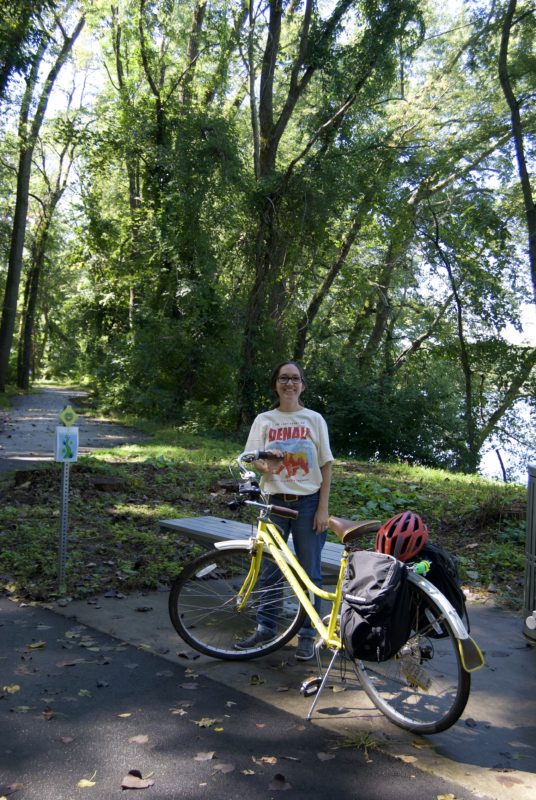
What about when it snows? I listen to the sound of the snow crunch underfoot. Snow is great. Icy sidewalks are not. Clear your damn sidewalks! I also have metal cleats that I strap onto my shoes for traction. A pair will last for years, and they are far cheaper than snow tires. When it’s cold, I wear layers. I dress for the season that I am experiencing. It helps to give very few fucks about certain things in life, so I have often simplified by not bothering to have a change of sneakers. Snow boots at work all day! Lots of crashes happen when it snows or rains. I am objectively a good driver in the snow, but that does not mean much when surrounded by lots of people who tap the brakes while going up a hill, or who are driving on bald tires. Can we please have mandated retraining for drivers who move from hotter climates and have never learned how to operate on snow and ice?
What about when it rains? When it rains, you get wet. I pay much more attention to weather forecasts than before. I carry an umbrella on days when I don’t end up using it. A few times I’ve gotten soaked down to the bone. In the grand scheme of things, that’s not a big deal. It sucks, but then I get home, shower, and change. A few tips: (1) Do not drive your car in the gutter when it’s raining hard. That’s so unnecessary and nobody needs to be splashed with motor oil and rat juice because you didn’t want to slow down. (2) If someone says they are running to catch the bus during a thunderstorm, don’t do anything to hold them up unless you literally have a life or death situation. Buses are not Ubers. That bus you caused someone to miss might have been the last one for the evening, and now they are walking an hour, dodging lightning. I find it hard to justify owning a car 365 days per year when the number of truly crappy weather days numbers below 15, if one includes extreme heat and cold.
What about when it’s hot? Heat is not my favorite. This is when I am more likely to ride my bicycle because, at least for my route, it’s less effort overall. There are a couple small hills, but then I’m coasting. It helps to understand that you are simply trying to get to work and are not competing in a bike race; there’s no need to exert much effort. On a recent day when it was around 100 degrees, this is what I did. My 30 minute commute on foot was carved in half. It could’ve been faster, but I was all about putting in minimal effort. Still, someone in an elderly, limping Acura-ish car dared yell at me for riding too slowly, as if he were putting in any physical exertion during a heatwave. I did not respond except to laugh when he got tied up in the traffic jam at the next block, and I was able to get around this by doing nothing more than continuing to ride in the gutter.
The other ways to cope with heat — leave earlier in the day before it gets blazing. Wear loose clothing. Wear a hat. Slather on sunscreen even though it feels creepy. Drink water before leaving and then more upon arrival. Give yourself more time and walk more slowly. Buses have a/c and if they were more convenient, I would probably just take the bus when temperatures are over 95.
If you’ve wondered how to tell who commutes not by personal vehicle, it’s easy. That person understands the value of street trees.
Do you have a shower at work? Honestly, I find the “shower at work” thing to be weird. I don’t want to be naked anywhere near my workplace, and I’m sure my colleagues are equally relieved by that.
Realistically, walking or cycling to work is not something that goes in the Sports section — it’s not running a marathon! One of the first things we learn to do as humans is to walk — it’s pretty awesome and I’m happy to be able to do it, but it’s really not deserving of the level of attention it gets from people who commute in metal boxes.
When I first started riding my bike years ago, I brought a change of clothes a few times, and then it just seemed like a lot of effort for something I did not care much about. If you can smell me, you are standing way too close to me and need to back up! I have a locker at work. I keep a few warmer pieces of clothing there to add in case the air conditioning at work is too brutal. There’s deodorant that I almost never need. I keep a change of socks there for if my feet get soaked on the way in from a rainstorm. I don’t know what to say. I “comb” my hair with my fingers if it gets messed up and call it a day. Listen. I’m middle aged. There’s no need to put on airs.
I think about how in 2040 I might have the opportunity to talk to a younger person who has not been born yet, and I imagine that conversation. Do I say that our habitat is so thoroughly mangled because regular people who could have done differently opted to drive two miles to work because of vanity? When you take the long view of things, it becomes harder and harder to justify bad habits that do not add value even at present.
Anyway, it’s not difficult to leave a few minutes early and give yourself a few minutes to cool off before any “important” meetings.
How do you do grocery shopping? I could talk about how much money I save by not having car payments, registration fees, gas refills, and on and on, but that’s all fairly obvious if you sit to think about it. An unexpected place I save money is related to shopping — for groceries or otherwise. As routine, I’m either walking, taking the bus and then walking, or riding my bike. I’m not very strong. Whatever I get, I need to move. If you’ve wondered how to stop making impulse purchases, a quick solution is to have to physically get them home. Add to this the extra time it often takes to get home, and you can cut back on convenience and fattening foods like frozen pizzas and ice cream. By the way, I opt to travel more distance to reach an actual grocery store, rather than relying on an overpriced bodega that has limited-if-any fresh food options. Walking distance from my home to grocery stores: less than five minutes to El Mercado, 15 minutes to C-Town, and 20 minutes to Stop & Shop. If I want to get fancy, I can walk 10 minutes to grab a bus to Trader Joe’s or to a Whole Foods.
The logistics are not complicated. A backpack or messenger bag and a few canvas bags work for me. I’ve learned — slowly, but I’ve learned — to not overload any single bag, or it’s an arduous trip. If I’ve biked, I have panniers, that is, a couple of bags that are attached to the bike. I can take a little more weight that way, granted I don’t have any major hills. The other part of this is that while I am car-free as a rule, I rent/borrow a car a few times each year. On those days, I stock up on all the heavy or bulky items for the next 3-6 months. Things like toilet paper and cat litter really don’t go bad.
I do have one of those insulated bags and can schlep frozen foods (Read: ice cream) if I really want to.
I did try a grocery delivery service once when I was not feeling well. I am not comfortable with someone being tasked to run my errands for me, but I would do this again if sick or otherwise physically unable to fetch my own groceries. I have friends who are way more into having everything delivered to them. That’s an obvious solution to the grocery problem for those who are okay with it.
Okay, but isn’t it dangerous? Aren’t you scared?
I do get asked this a lot. And I know that if I answered it fifty times, there would still be someone insistent that I was lying or wrong, or both.
I recently had a nightmare that I was walking to a bus stop in the area of Albany Avenue and Main Street, and suddenly I was stuck in the middle of a cop in his car chasing a civilian in his. The details were blurry, because it was a dream and all, but the terror felt real. I ducked down an alleyway (it was a dream — I know there are no alleyways in the area where this sort of happened. It also contained Barnard Park in South Green.) because it seemed like the best bet when gunshots began ringing out. All the men who were just out on the street sat down and put their hands in the surrender position, not because they had been doing anything, but because they knew they had to be very obvious about not being a threat. From there, it got quiet and I got on a bus with a bunch of other people, some of whom were having panic attacks having also just witnessed this.
If you are asking what I worry about, it’s that. It’s getting stuck in the middle of a violent police/criminal interaction. On foot, I have found myself in areas where something was clearly going on, but those in charge felt no need to communicate what. For instance, last year I was walking in my neighborhood and just about every emergency vehicle you could imagine was at the Burns School. None of the responders, who I walked within inches of, thought to tell me this was a possible hazmat situation. Nobody said a word. On the next block, I chatted with other residents who wondered what was going on. We all had the same concern: mass shooting. Finally, I managed to find information online explaining that it was suspected hazmat. It turned out to be an abundance of caution. Still, you have to wonder about people’s training when they can’t be bothered to briefly tell passersby what level of alarmed they should be feeling. On another occasion, I was walking this same general area when I noticed several cop cars, all clearly looking for someone, go in various directions. Basically, they were driving around the block that I was in the middle of, feeling open and vulnerable. When this happens, it feels confusing. I’d like to think that if I were in danger, a cop would bother to redirect me so I could change my route or duck and cover, or whatever the hell one does. Later, I would learn they were in pursuit of someone driving a suspected stolen car. These things can escalate, of course, but there’s a gap between this and pursuit of a murder suspect.
Street harassment happens. I’ve written about it a lot. Everyone has an opinion on how it should be handled. In short, I don’t think it’s innocuous or cute or a compliment. I think it’s a sign that someone didn’t raise their kid right. But let’s be clear: I’m not scared of pathetic dudes yelling garbage at me. I can differentiate between annoyance and fear.
What I am scared of, though, is people who are impaired, distracted, or feeling entitled to behave however they want, driving large, heavy machines. I have been directly threatened while riding my bicycle; a woman said she would run me over. She was angry because I slowed her down by five seconds. Literally. It was on a short, one-way street with a low speed limit, and we were already more than halfway down it. I wasn’t poppin’ wheelies or weaving around. I was simply riding to my destination as safely as possible given the physical conditions of this road. She met that by honking her horn and yelling threats out the window. That level of lopsided rage worries me. I have witnessed people on a trashy Facebook neighborhood group talk about wanting to hit pedestrians. I know that we have something very sick in our culture when drivers will act out, dangerously, when someone might slow them down by five seconds.
One message given to pedestrians is to make eye contact with drivers when crossing streets, with the theory being that this will boost our safety. At the same time, AAA suggests avoiding eye contact with aggressive drivers — which are many. The problem is not whether we are seen by motorists, but whether those in cars respect our right to exist. When drivers’ sentiments start to echo that of the gun lobby, it’s obvious that the fetishization of a machine has won out for those folks. Their belief that they can wield their car/gun however they like has solidified in their minds, and that means my right to life is ranked below their toys.
This culture of callousness and hate has been reinforced by the choices that our public servants — City and State employees — make. We have had street engineers widen roads, giving motorists no sign that they should be coming to a complete stop before turning right. I have complained non-stop about the Capitol and Broad intersection, where people blow through lights because getting on the highway faster is more important to them than allowing a pedestrian with the right-of-way, in the crosswalk, safe passage. When construction was spotted at this site a few years back I was excited, assuming improvements would be made. They weren’t. Instead of tightening corners, one segment of the road was actually widened. With the addition of housing in the area, there are even more pedestrians using this already busy crossing…but instead of planning improvements to our quality of life, we have people stuck in the 1960’s, stubbornly designing for a past that will never return.
While on foot or bike, I have more time to pay attention or and ponder things such as shoddy design and how little respect there is for people’s right to live.
The aggressiveness, carelessness, cluelessness, and callousness of people driving death machines is what I worry about. Not some dude hiding in the bushes.
Isn’t it inconvenient? It really comes down to what “Sustainable Sue” writes on Tough Nickel: “In my experience, the biggest deterrent to living car-free is the fear of it. If you’ve already done it, or have friends who’ve done it, you already know that finding bus routes, carpooling, and renting cars is pretty easy––figuring out how to work that all out is sort of mechanical and today’s Internet apps help make it easier. But having the courage to do it is another matter. It does change your lifestyle.”
It has been a lifestyle change. Being car-free has meant learning patience and slowing down. That doesn’t mean allowing myself to be treated like a doormat. I am vocal about bus stops and shelters that are in disarray, along with routes that run sporadically and impractically. I let drivers know that they may not fly around the corner (the Connecticut version of “right on red” apparently means that drivers don’t stop or slow down before proceeding) and disrespect my right to live. But I am more patient in a way that I think is healthier.
Instead of contributing to and then getting stuck in traffic (and then having the cognitive dissonance that allows one to not recognize her role in causing that problem), I experience what I’ve been calling “social traffic jams.” On a typical day, I cross paths with someone I know — and that does not just happen on streets downtown. It could be the friend who I almost never see otherwise because she works a different shift from most, but I happen to catch her when she’s going home and I’m headed in. One day I learn that a friend has a spot in a community garden that I occasionally pass, and I find this out by hearing him calling to me from behind sunflowers and out-of-control tomatoes. I catch up with neighbors who I might otherwise only see once or twice per year. I get to pet lots of dogs. You know how many dogs I got to pet when I used a car to commute? Zero. These are unplanned, real world interactions.
Another lifestyle change has been a move toward practicality. Regular sunscreen use and more sensible shoes.
Getting caught in a rain storm is not all bad. Rainwater agrees with my hair more than the chlorinated tap water does. And I dare someone call into question my commitment to work when I manage to arrive not just on time, but early, in snow, sleet, rain, or heatwave.
The question of inconvenience is a philosophical one, not a factual one.
Is it convenient to wait on AAA for hours in a parking lot? Is it convenient to lose time sitting behind the wheel when I could be either productive or relaxed (or both) simply by opting for another mode of travel? Is it convenient when the car gets stuck during an ice or snow storm. Finding and paying for parking? Not convenient (but also not as impossible as some whiners on social media would have us believe). Worrying about getting pulled over because you forgot to renew your registration? Worrying about the car getting vandalized or stolen? Wondering if it’s going to start up? Working extra hours to pay for that car and all its trappings? Not convenient. Having to deal with detours because yet another motorist crashed their car? There are almost never detours as a pedestrian. When streets are cordoned off, because of crashes or fires or fallen trees, you’re often allowed through on foot. When the marathon and other running races take over my neighborhood, I’m not thwarted by the road closures.

But don’t you miss it?
LOL. No
I don’t miss participating in the mandatory scam that is the insurance industry. I don’t miss time spent pumping stinky gas or getting the oil changed. Bringing the car in for an emissions test? Don’t miss that either. Working more hours to pay for something that is a source of anxiety? Nope.
There are days when I would like to, without much advanced planning, get in a car and go do something mindless, like wander IKEA. . . but I have also lost my sense of entitlement to instant gratification. So much of the environmental mess that we are in has been caused by humans engaging in a series of seemingly small insignificant choices. The key word there is series. If it truly were only one time that we went for a pointless joy ride (or took a plastic bag, used a plastic straw, etc.), then it would not amount to all that much. But this shit is a lifestyle for most who have any money, and we all lie (mostly to ourselves) about our own behaviors in order to get to sleep at the end of the day. We also work really hard to justify our bad habits.
If I want that spur of the moment experience, I need to see if there is a car rental available. Then, I have to ask myself if the cost is worth it. Before, the cost of such a decision would be somewhat hidden. Now, it’s apparent. If I can make the same trip on foot, bicycle, bus, or train within the window of time available, then that’s what I do. To be honest, most of those feelings about “needing” to spontaneously go somewhere are gone. As it turns out, that way of thinking is habitual. Habits can be broken.
Would this be easier in Boston or Manhattan? Absolutely. Is it doable in Hartford? Yes, and you don’t need me to tell you that. About 21% of Hartford residents have self-identified as never or almost never having access to a car.
September 22 was World Car-Free Day, but if you missed it, you have 364 other days to choose from. Every day this week there will be a breakfast meetup in Hartford for those whose commutes involve something besides driving solo — walking, cycling, skateboarding, taking the bus or train, hoverboarding. These gatherings will be from 7:30-9 AM. Monday at Ashley’s, Tuesday at Donde Julio, Wednesday at Blue State Coffee, Thursday at Story & Soil, and Friday at the Barnes & Noble Starbucks.
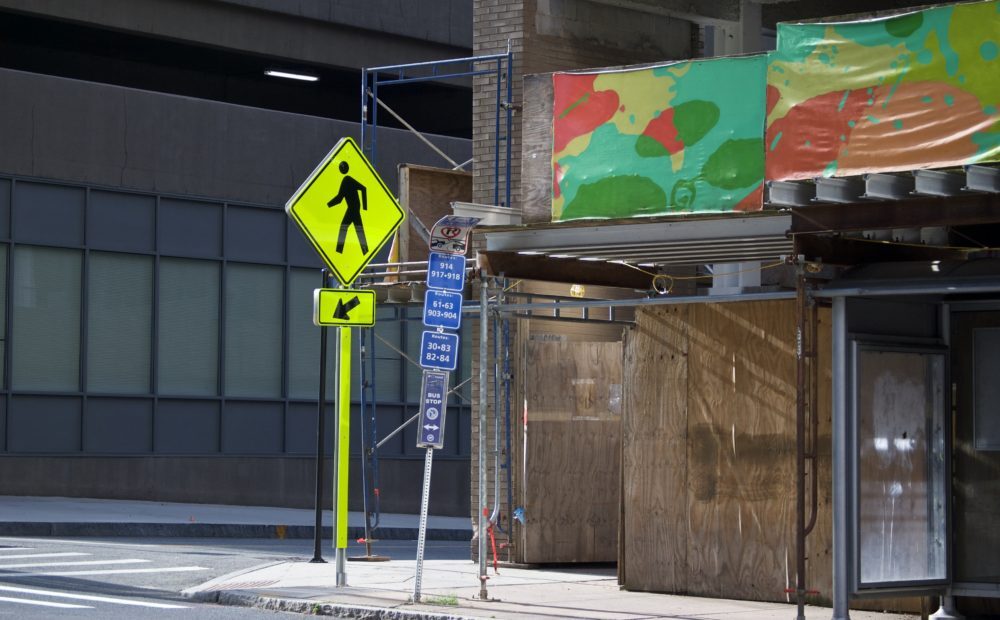
Richard Nelson
Kerri, Thanks for this piece. You know where I stand on cars. How I hate to see the one to a car drivers. When I am on the bus stuck in a traffic jam I count the folks with me. Remarkable how many cars we have taken off the road. Like you when I lived in Hartford I walked to work in rain, sleet, snow and was only late once.
If Tim and I at over 70 can do it without a car, do all the things that folks do with one and considering our aches and pains then most can. Yes to all the wonderful things one sees while walking. One of the lines in a very old art work, The Museum was closed today so I took a stroll is this line, A thousand ants carry a dead beetle home was an amazing little production that I just stood there and watched. Yes to no cars!
Tom
Excellent. People do not want to be “learning patience and slowing down.” That sounds like surrender to many Type A people. I admit that if I ever gave up my car I’d use Uber/Lyft a lot. I can only be so mellow.
Chris D
Great piece. Really appreciate the perspective and I think it’s super enlightening and inspiring to read about an American (outside very few cities like NYC nonetheless) successfully living a happy car-free life. For somebody like myself who commutes via (express) bus and limits my solo car usage as much as possible, I completely empathize and respect your lifestyle. That said, I wonder if the average person sees it and is immediately turned off because it’s such an extreme measure i American culture – especially if you live outside a big-ish city, it’s near impossible to imagine life not centered entirely around selfish and dehumanized auto transportation… like the bus is beneath people, bikes are just toys you outgrow, and walking more than a parking lot distance is somehow uncomfortable. I wish more people had an open mind about transportation :/